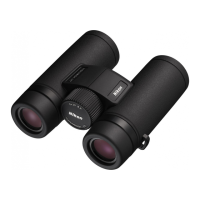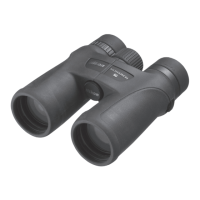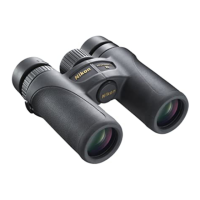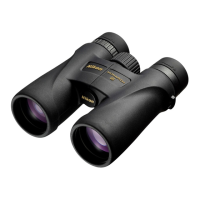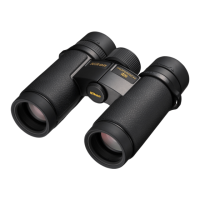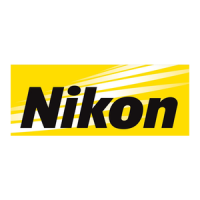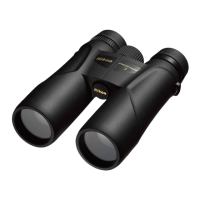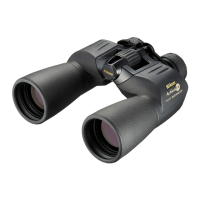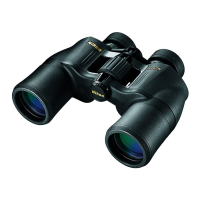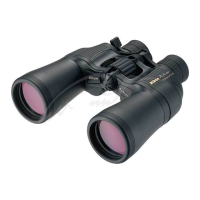1m
OPERATION
AND
CONTROLS
6
1.
Do
not
open
the
right
and
left
binocular
tubes beyond
their
limits. Also be careful
not
to
rotate
the
diopter
ring, focusing
ring and zoom lever (ring) beyond
their
limits.
(Fig.
7)
2.
Avoid rain, water splashes, sand and
mud.
(Fig.
8)
With waterproof/water-
resistant binoculars,
though
some
rain or water splash will
do
no harm,
wipe the water
off
as
soon
as
possible.
To
confirm
if
your binoculars are
waterproof/water-resistant
or
not, check
the instruction manual
of
the
product
you purchased.
3.
Always protect binoculars/monocular
from shock.
If
you cannot obtain
a normal image after
dropping
or
getting
the binoculars/monocular wet,
take
them
immediately
to
a Nikon-
authorized service representative (Fig.
9)
4.
When exposed
to
sudden temperature
changes, water condensation may occur
on lens surfaces.
In
this
case,
thoroughly
dry
the
binoculars/ monocular at room
temperature.
Fig. 7
Fig. 8
Fig. 9
STORAGE
5.
Water condensation
or
mold
may
occur on lens surfaces because
of
high humidity. Therefore, store
the
binoculars/monocular in a cool,
dry
place. After use on a rainy day
or
at
night,
thoroughly
dry
them at room
temperature, then store in a cool,
dry
place.
6.
For long
term
storage, keep binoculars/
monocular in a plastic bag
or
an
airtight
container
with
a desiccant.
If
this
is
not
possible, store in a clean,
well-ventilated place, separate
from
the
case,
as
they are easily affected
by
moisture.
(Fig.
1
0)
7.
Do
not
leave
the
binoculars/monocular
in a car on a
hot
or
sunny day,
or
near
heat generating equipment. This may
damage
or
negatively affect them.
(Fig.
11)
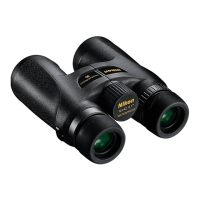
